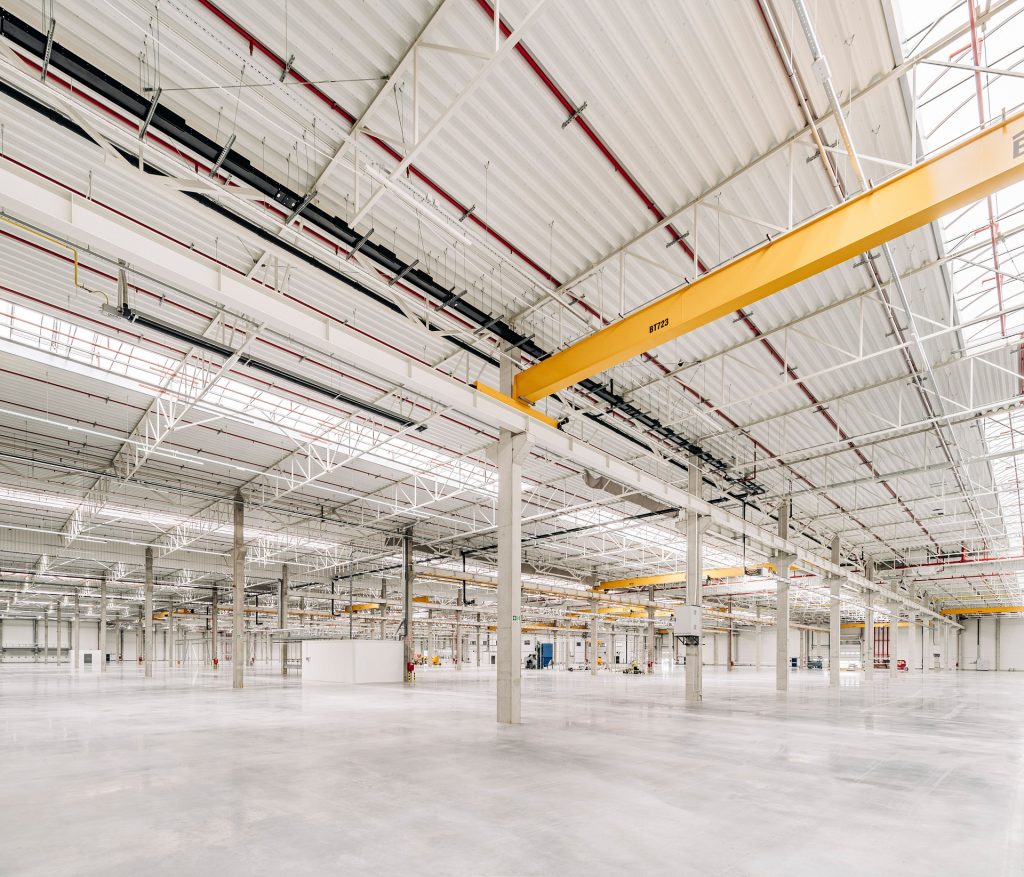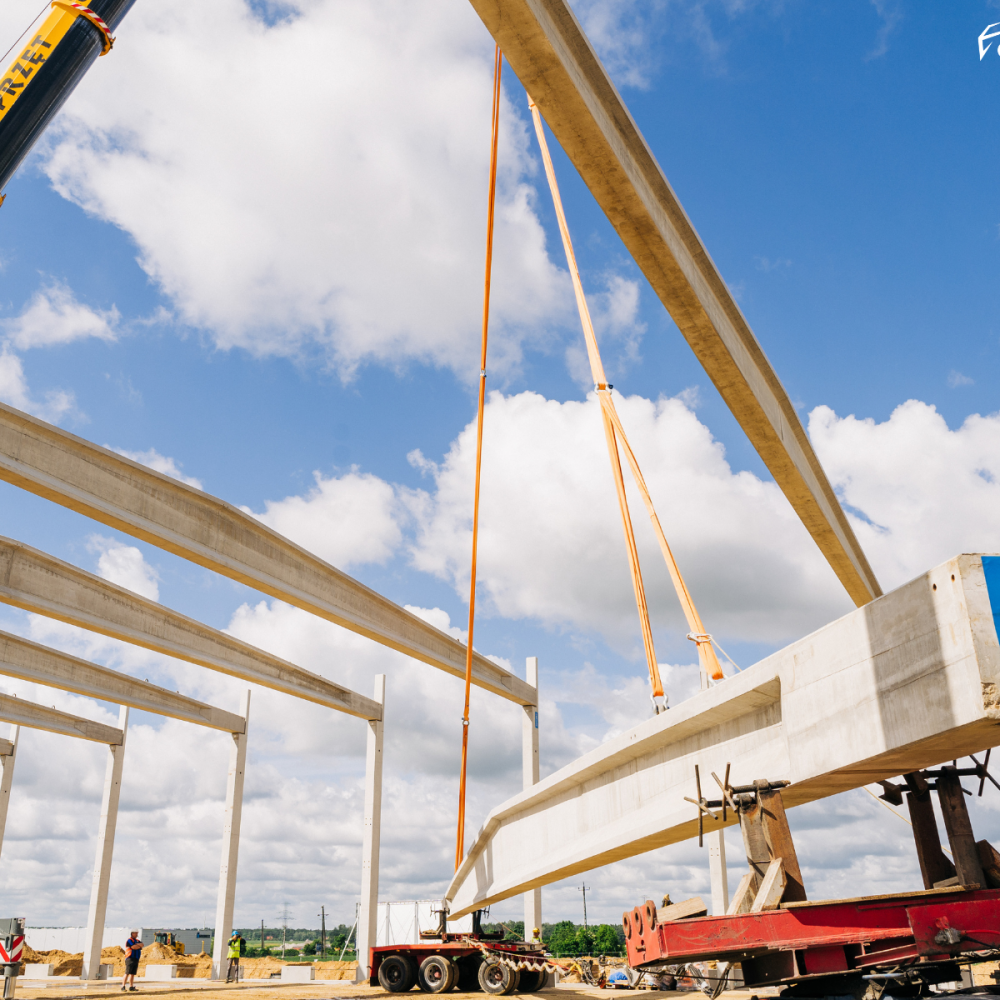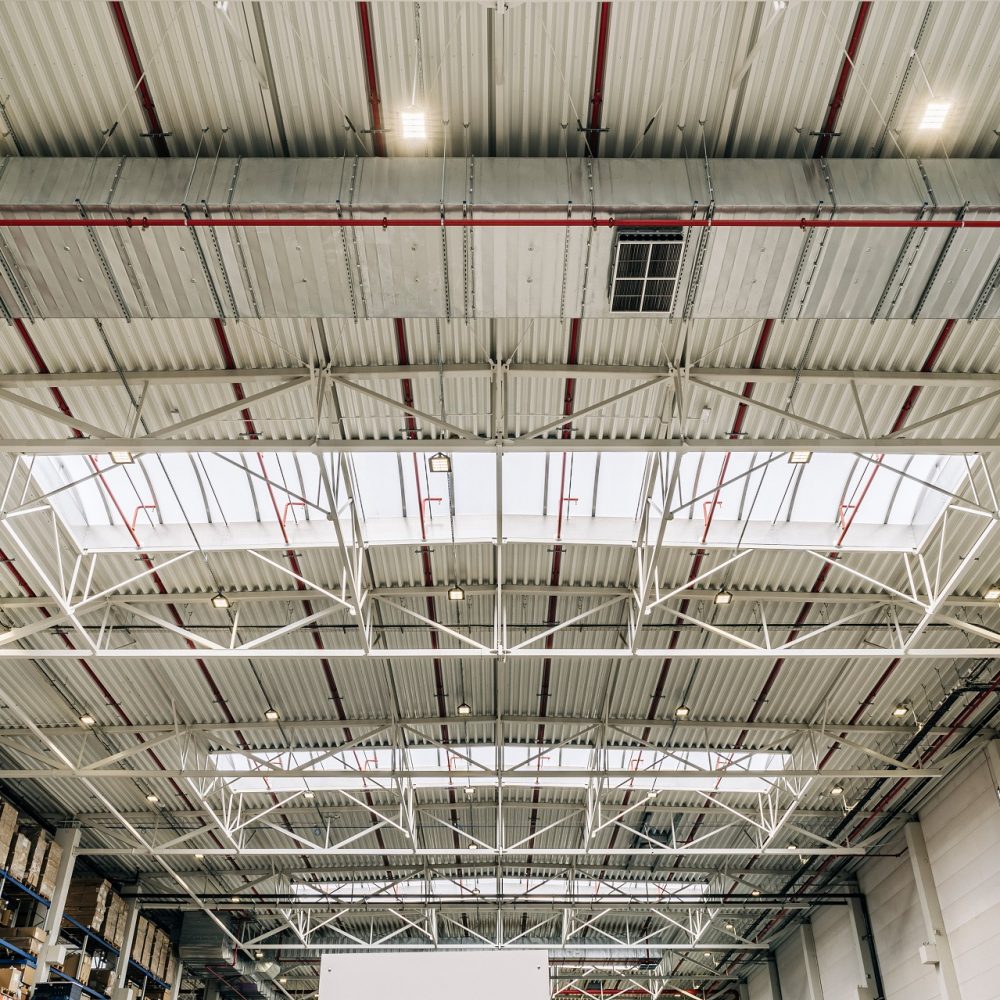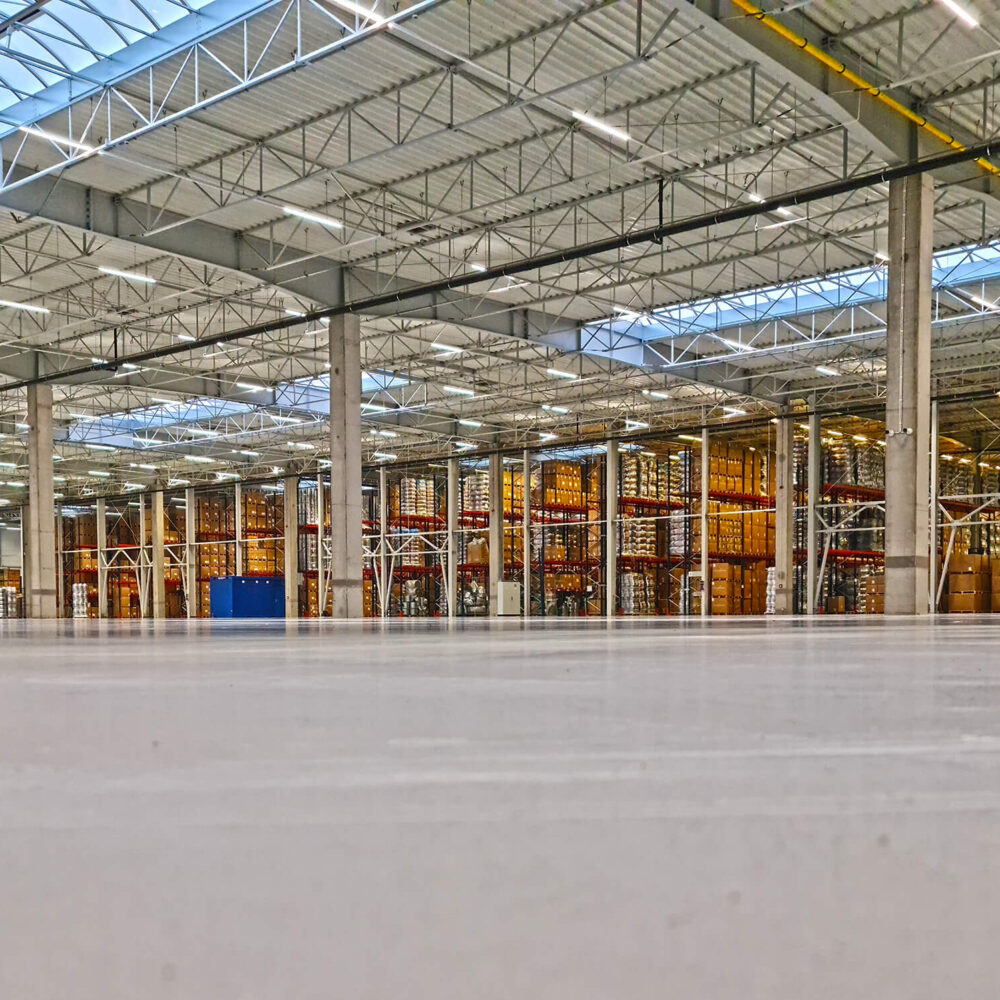
An overhead crane is a very frequently used device not only in production halls, but also in logistics and storage halls. Provisions for it should be made at the design stage of the facility, and the type of equipment should be chosen according to the needs of the specific company that will use it. What exactly is an overhead crane used for? What are the types of cranes? Why and when should it be fitted?
Whether the hall will be used for production or as a storage and packaging area for goods, handling equipment needs to be planned into the hall. It facilitates and speeds up human labour and at the same time (these can be for example the cranes in question) and makes optimal use of the space inside the facility.
Overhead crane in a warehouse
What are cranes/lifts? Operated in an intermittent mode, these machines are designed for the transport of small and large parts in warehouses, production halls, logistics centres and production and storage facilities. The design of the crane includes the elements of the supporting structure, the lifting and travelling mechanism, the power supply and control system as well as additional and technical equipment depending on the expected functionality.
The use of cranes makes it possible to reduce the physical effort of workers, they do not have to move loads between different workstations. All they have to do is prepare it properly for transport and supervise it. The latter is usually handled by a crane operator who controls the crane from the workplace or from a cabin using a radio system or a pendant control.
How do I choose the right crane for my hall?
What to look for when choosing an overhead crane for a warehouse? First of all, the nature of the process must be taken into account and the exact locations where it will be used must be planned. The expected lifting capacity, the transfer height and the length of the travel path are also determined.
Importantly, cranes are planned as early as the design stage. Why is it so important? Because warehouse halls with an overhead crane will need to be able to withstand heavier loads than those without cranes. To put it simply, cranes allow goods to be transported both vertically and horizontally, thus inducing dynamic loads on the crane beam. The load from this beam is transferred on to the main frames of the structure, so this must be considered in the design calculations.

Moreover, note that a hall with an overhead crane will cost more than the one without, but this is not the only criterion determining the final cost. The price here is mainly influenced by the lifting height of the elements. The height at which the crane will be installed depends on that and, consequently, this affects the height of the side wall of the building including the ridge.
Types of cranes
Importantly, there is no one-size-fits-all warehouse crane that works for every facility. Different types of equipment are available and can be easily adapted to your needs. The most important division is that based on the design. Accordingly, overhead, gantry and suspension cranes are distinguished. The overhead travelling crane, also known as track crane, has its own track. It consists, for example, of a trussed beam platform rolling on rails located in the upper part of the hall. This type of equipment is most often used in industrial halls.
The gantry crane is used on the outside of buildings. Depending on the needs of the investor, these can be small workshop gantries controlled remotely or cranes of several hundred tonnes capacity with an operator’s cabin. A gantry consists of a platform suspended on two side bridges linking two or more gantries. The mobility of this type of crane is ensured by the rail or wheeled chassis.
The overhead crane is placed under the roof structure inside the hall. It uses one rail. It is easy to assemble, does not take up a lot of space and, at the same time, allows elements to be moved quickly from place to place. It is often chosen by investors building logistics or warehouse halls.
What are the benefits of investing in a hall equipped with an overhead crane?
What benefits has a hall equipped with an overhead crane? Warehouse cranes make it possible to transport even very heavy components, weighing several tons or more, within a hall. With this type of equipment, moving loads in an easy, safe and relatively fast. Without them, many warehouses could not function or would function much worse if the material was only carried with handling equipment, such as forklifts.



